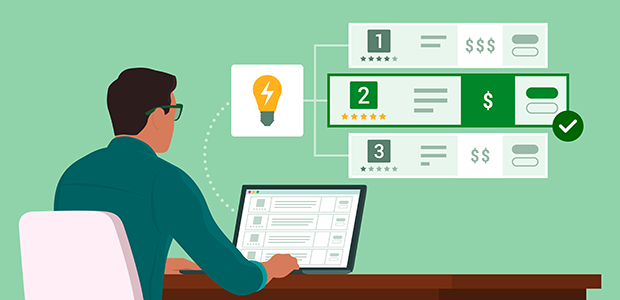
5 key considerations when choosing the right payment provider
With the rise of eCommerce and changing customer behaviours, more businesses are selling their products and services online. This year, the UK’s revenue is expected to increase by 19% - showing the scale of this growth.
Selling online offers great benefits, but it also increases the number of payment options available to customers, which can be both confusing and difficult for businesses to manage. It’s important, therefore, to explore some of the key considerations businesses should keep in mind when choosing the right payment partner.
Available payment methods
Today’s businesses need to offer a seamless payment experience with an array of suitable payment methods to meet both changing consumer needs and purchasing behaviours. By offering a range of payment options, it ensures the payment process is more convenient for their customers – which can increase customer satisfaction and loyalty.
What’s more, by offering a wide range of payment options, such as credit and debit cards, ACH, or Apple Pay and Google Pay (to name a few), a business can gain an advantage over competitors that only accept traditional payment methods, for example. This can lead to increased revenue and improve your bottom line.
Ease of integration with current systems
Many businesses that sell online rely on multiple systems to manage different aspects of their operations, such as customer relationship management, accounting, inventory management and payment processing. The benefit of having just one payment partner that can easily integrate with these systems will result in streamlined operations, reduced risk of errors, and saving time and money. Ultimately, increased organisational returns.
Security
Security is as vital in payments as it is in every other part of business. As more transactions are conducted online, it is essential for providers to maintain a high level of security to ensure the safety of their users’ data and to ensure all transactions are secure.
Businesses should seek those providers that offer a range of security features to protect their customer’s financial information and prevent fraudulent transactions. The best providers should have a range of features to ensure secure transactions, including using SSL encryption to safeguard data during transmission, tokenisation to replace sensitive data with non-sensitive tokens, and two-factor authentication to verify the identity of the parties involved in a transaction. Additionally, providers should also be compliant with relevant data security regulations, such as PCI DSS, and conduct regular security audits to identify any vulnerabilities.
User experience (UX)
Friction within payments is a topic that never goes away. Clearly, there is a balance to be struck between user-friendly payment systems which are crucial for efficiency, ease of use, and adoption as well as security.
When done right, a seamless experience makes the payment process quick, easy, convenient and reduces the risk of cart abandonment. By providing a positive experience, businesses can build customer loyalty and encourage repeat business, ultimately leading to increased revenue and growth.
Reporting & analytics
Today’s businesses require a holistic view of transactions, sophisticated and flexible reporting capabilities, and advanced analytics. Why? It is the key to help inform decision-making. By providing detailed data on payment transactions, businesses can gain valuable insights into customer behaviour, payment trends, and revenue streams, helping to identify areas for improvement and track key performance indicators. This, ultimately, will help them grow and succeed in a highly competitive market.
The power of end-to-end payments solutions
End-to-end payment solutions can help businesses manage their payment processes more efficiently and effectively, providing a competitive advantage in today’s fast-paced business environment. Without such a solution, businesses would otherwise have to use one platform to accept payments from their customers and a different platform to make payments to their suppliers, with separate reporting and reconciliation processes – which can be a nightmare.
With each piece of the payments process seamlessly connected inside a single platform, businesses access new ways of getting paid to build up cashflows that, particularly in today’s current climate, companies need more than ever.

